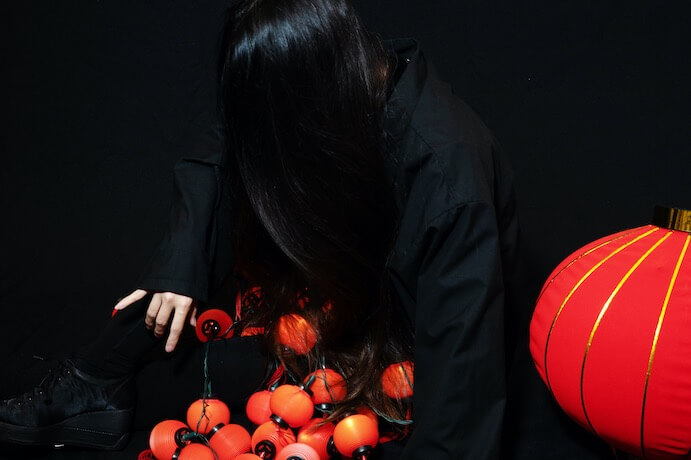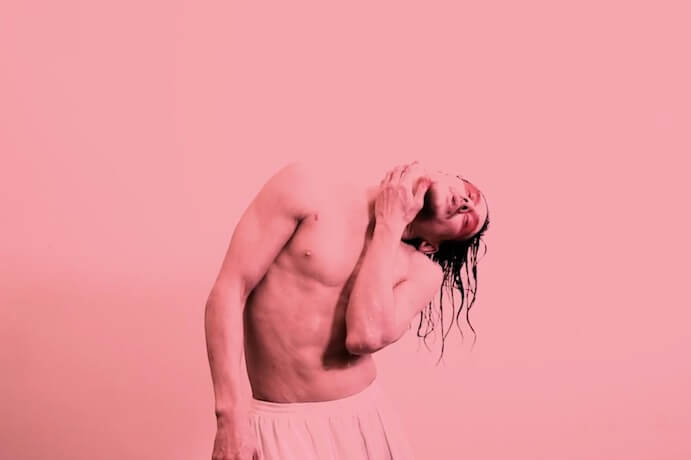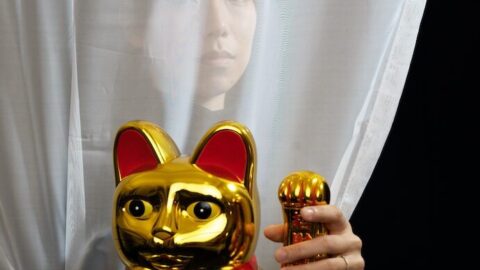nineteen ways of looking is an opera that watches you back. “The camera is now my eye…” reads the first caption. “It is only when I stare at the camera that I am looking you in the eyes.” This may sound unsettling, but the framing pays off. So begins the vulnerable, voyeuristic journey that is nineteen ways of looking, the digital opera spearheaded by British-Malaysian composer Jasmin Kent Rodgman.
Created specifically for Instagram and initially dribbled out one installment at a time over the course of eleven days, nineteen ways of looking isn’t merely an opera optimized for a social media platform; rather, the opera is the Instagram account itself. In all its fragmentation, Instagram is a fitting host for the topic—the rising discrimination against East and Southeast Asian people in Britain—as it lends itself to multiple media formats, from photographs and slideshows to short videos, long videos, reposts, and text captions. Viewers who watched the show unfold in realtime from November 17-27, 2020 would have seen these installments lodged within their regular feeds (algorithm permitting), while latecomers are now able to devour the show in its entirety. At the time of this review, the opera is still up for viewing on the @nineteenwaysoflooking Instagram page, though the creators plan to take down in early 2021.

The music, composed by Jasmin Kent Rodgman and performed by four additional singers and musicians including countertenor Keith Pun and contralto Hildur Berglind Arndal, feels sparse, chilling, and industrial. The spatial sound design is strong and not at all subtle. Imagine you are alone in a gigantic, reverberant room—each water droplet, wailing voice, and gong sounding half a mile away. Perhaps intentional or perhaps happy accident, the music favors the phone-friendlier higher registers rather than dipping too far into bass, which is decidedly not well-served by tiny speakers. In an opera with such varied approaches as this one, the music strays from its main sound at times, with notable exceptions being the dreamy guzheng solo in row 8 column 1 and the comedic sauce squirts in the stop motion piece “Mass Exodus.”
So, racism, eh? Not an easy topic to present. Sometimes, you just have to dig in and get messy, and this is one of the many things that nineteen ways of looking gets right. There’s no intended viewing order, and there’s no required continuity between the nineteen scenes. While I found the lack of guidance confusing, the vague approach made sense once I abandoned the notion of order. There’s no clear narrative when it comes to understanding race, and each installment of nineteen ways of looking is meaningful as a standalone piece.
One of the jaw-droppers is “Healthism” (featuring choreographer and dancer Si Rawlinson) in row 6 column 3. “Though I no longer have the virus now, I’m still dirty in my mind…I take out my phone every ten minutes to see if my digital health code turns green.” The voiceover is enacted by the solo dancer who writhes and squirms, smearing his hands over his face and contorting into backbends. He has just had dinner with a newly recovered friend, but all he could think about were the germs spat over their food. “Aren’t I terrible?” he jerks his head. The background gradually turns from white to pink to ominous red. This piece is drenched with guilt, self-loathing, and shame, yet its contained form and visual framing capture the pressure of bottled up feelings and invisibility, themes explored in other pieces, as well.

In row 17 column 2, we are presented with something completely different: a carousel of still images showing instances of yellow-face throughout modern entertainment history. We see pop singer Katy Perry dressed as a geisha at the American Music Awards (2013), Katherine Hepburn in a cheongsam and eyelid prosthetics as Jade Tan in Dragon Seed (1944), and Mickey Rooney as the buck-toothed Mr. Yunioshi in Breakfast at Tiffany’s (1961). The tenth and final image shows Korean actor Claudia Kim portraying Nagini in Fantastic Beasts: Crimes of Grindelwald (2018). We can celebrate seeing a real-life Asian actor like Kim onscreen, but is it really a victory if she’s playing a literal cursed snake?
In “We Can Be Quiet,” Rawlinson breaks the fourth wall and addresses the viewer face to face. This is the piece that makes the most direct contact with viewers. Presented as a friendly fireside chat and accompanied by smooth, warm piano music, the whole thing is reminiscent of a cozy holiday special. It’s real talk but in a nice tone of voice, friend to friend. The poem is a direct call to young British Asian adults to start speaking up about racism. “Asian privilege is to say that ‘Black Lives Matter’ is a Black and white issue,” Rawlinson clarifies. “When people say they believe in order, what they really mean is indifference…” This piece really speaks to me as a mixed person of Southeast Asian descent.
nineteen ways of looking is not a comfortable opera to watch, but it’s not a hopeless one either. As a work of art, it is performed and presented superbly; not a single performance or photograph feels extraneous or uncommitted. Both distant and uncomfortably intimate, this opera raises many more questions than provides answers.
I CARE IF YOU LISTEN is a program of the American Composers Forum, funded with generous donor and institutional support. A gift to ACF helps support the work of ICIYL. Editorial decisions are made at the sole discretion of the editor-in-chief. For more on ACF, visit the “At ACF” section or composersforum.org.
























